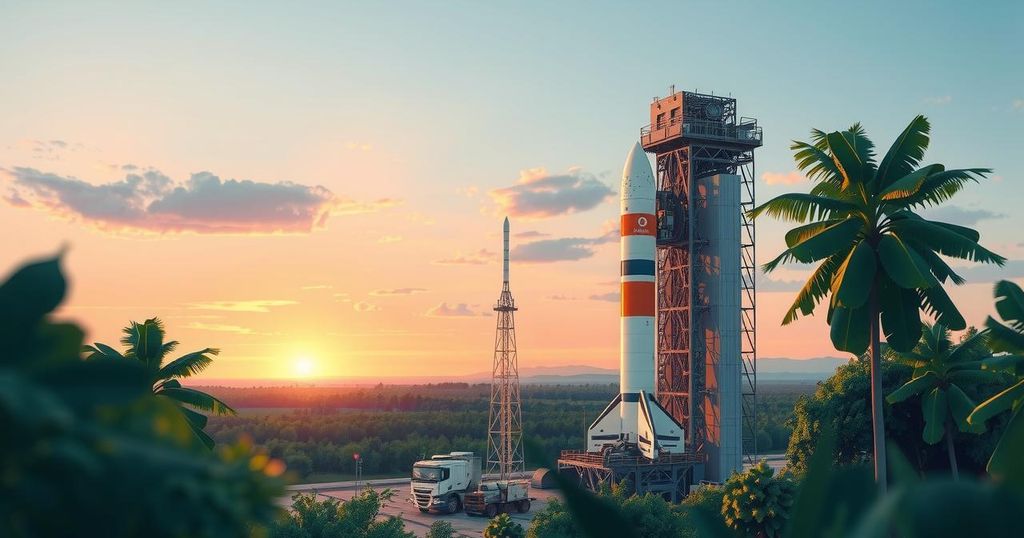ISRO plans to launch its 101st satellite, EOS-09, on May 18, 2025, from Sriharikota. This satellite aims to enhance surveillance, especially along borders and coasts, playing a role in national security. Further collaboration with NASA on the NISAR project underscores ongoing advancements in Earth observation technology.
The Indian Space Research Organisation (ISRO) has announced the upcoming launch of its 101st satellite, designated EOS-09. Scheduled for May 18, 2025, the satellite will be launched aboard the Polar Satellite Launch Vehicle (PSLV-C61) from the Satish Dhawan Space Centre in Sriharikota, with liftoff planned at 5:59 a.m. ISRO Chairman V. Narayanan confirmed this timing, marking a significant milestone in India’s space endeavors.
The PSLV-C61 rocket has already arrived at the Mobile Service Tower at the launch center for its final preparations, including integration and checks before the big day. Former ISRO scientist Manish Purohit, discussing the implications of the launch, noted that EOS-09 would be a vital follow-on to the earlier RISAT-1 mission. He pointed out the importance of the satellite in enhancing monitoring capabilities at borders and coastal areas, particularly regarding sensitive security matters.
Purohit further highlighted the satellite’s potential to detect unauthorized movements, which could play a crucial role in anti-terrorism efforts, especially following recent security incidents like the Pahalgam terror attack. Meanwhile, ISRO’s V. Narayanan emphasized satellite technology’s critical role in national security and governance, stating that with this mission, ISRO is committed to tech excellence that benefits the nation.
Pawan Kumar Goenka, Chairman of IN-SPACe, also underscored the need for continuous capability enhancement, resonating with the ongoing developments within ISRO’s projects. In addition to EOS-09, ISRO is preparing to launch the NASA-ISRO Synthetic Aperture Radar (NISAR) satellite aboard the GSLV-F16 mission, indicating a robust collaborative effort in space exploration.
NISAR will incorporate dual-band radar technology from both NASA and ISRO to monitor changes on Earth’s surface, ecosystems, and track natural disasters. This ambitious project aims to provide vital insights into various global dynamics, showcasing an ongoing commitment to scientific advancement and international cooperation.
EOS-09 is equipped with advanced C-band synthetic aperture radar technology. This cutting-edge feature allows the satellite to capture high-resolution imagery of the Earth’s surface regardless of weather conditions or time constraints. Such capabilities are essential for effective management and oversight across multiple sectors, reinforcing India’s growing prowess in space surveillance operations.
In summary, ISRO’s upcoming launch of the EOS-09 satellite represents a significant step forward in India’s surveillance capabilities. This mission, along with the simultaneous NISAR project with NASA, highlights the organization’s commitment to national security and technological advancement, demonstrating its essential role in monitoring and managing sensitive areas relevant to national interest.
Original Source: timesofoman.com






